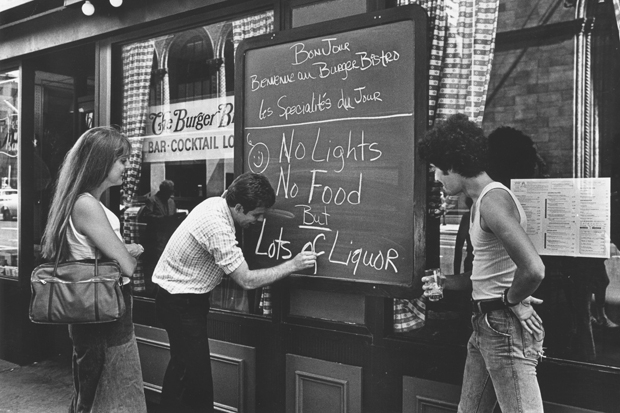Ninety pages into the juggernaut that is City on Fire, I begin to think that this is really a box set masquerading as a novel. As such it will be great. A New York setting, a cast that’s a Noah’s Ark migrant mix (from Afro to Vietnamese), a gripping crime investigation and a historical and dramatic time-frame running from the New Year’s celebrations for the American bicentennial in 1976 to the nightmare of the 1977 New York blackout.
A box set is a distinct possibility. Hallberg has already sold the film rights. The plot’s got everything: poverty versuswealth, power and corruption, racial tension, drugs, punk anarchy, sex and, above all, connections between a great range of characters (some share the same shrink) as if the novel had spawned a whole fictional family. One sleepless night I counted to 33 and hypnagogically shifted Middlemarch to New York.
But don’t wait for the movie. There’s writing here that’s too good to miss. The novel’s construction is impressive. Hallberg must have covered a kitchen wall plotting the trajectory. Although the narrative arc spans the year between the shooting on New Year’s Eve 1976 of a girl in Central Park and the anarchic night of the 1977 blackout, the novel’s division into seven books allows Hallberg flashbacks to the Fifties and Sixties in which to explore the characters’ lives and the city’s history.
The girl who is shot — Sam Cicciaro, the firework genius’s daughter — becomes emblematic of the city’s violence and corruption, and, as she lies in a coma in Beth Israel hospital we watch New York come to the boil. Among the memorable characters in one way or another connected to Sam are William Hamilton-Sweeney III (aka Billy Three-Sticks), the wastrel heir of a financial empire; Charlie the chop-haired youngster, part visionary, occasional punk, who saves dogs and buildings; Larry Pulaski, the crippled cop, not to mention Solomon Grungy, Nicky Chaos, Mercer Goodman (who is) and Keith Lamplighter — Hallberg has a Dickensian ear for names.
There’s humorous description — punks whose clothes are ‘held together by dental floss and wishful thinking’; thought-provoking aperçus — ‘choice isn’t the same as freedom’, ‘the powerful powerlessness of love’; sharp dialogue and emotional grit.
Love of all kinds (gay, married, adulterous) is what Hallberg does best, particularly love between parent and child. The reconciliation scene between William Hamilton-Sweeney II and III bears comparison with Aeneas saving his father Anchises from burning Troy.
What’s missing? There’s a reference near the end of the book to New York’s trade centre seen ‘as if the building is on fire’. Is this a nod towards 9/11? Does City on Fire contain an implicit comment on contemporary America? Hard to know. Is the suggestion that the punks torching the city are the heirs of those who fought for independence convincing? Maybe.
Hallberg has published a novella, as well as reviews for the New York Times, but City on Fire is his debut novel. He has charm, says his UK editor, Alex Bowler. To which add wit, insight and a vivid sense of history.






Comments